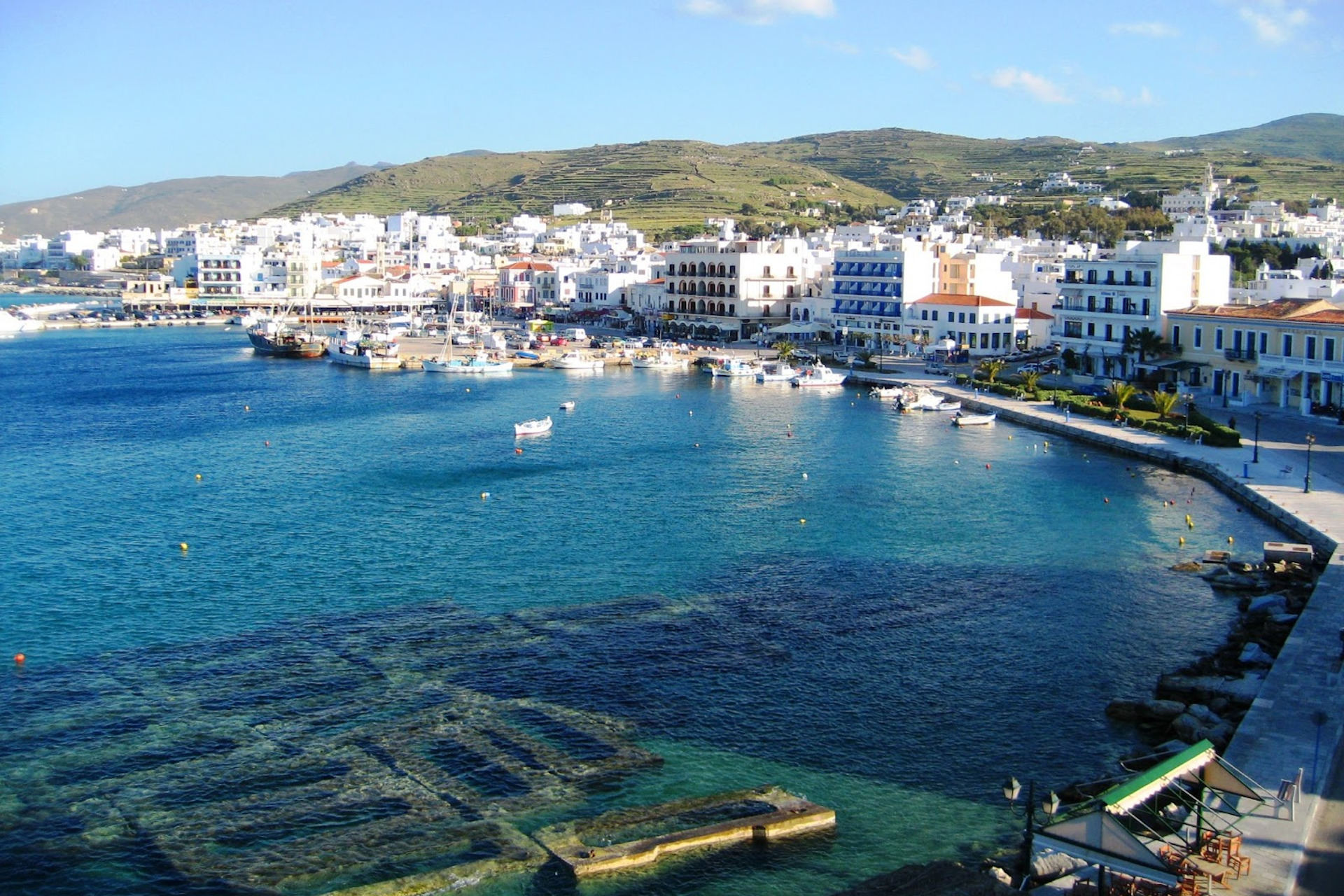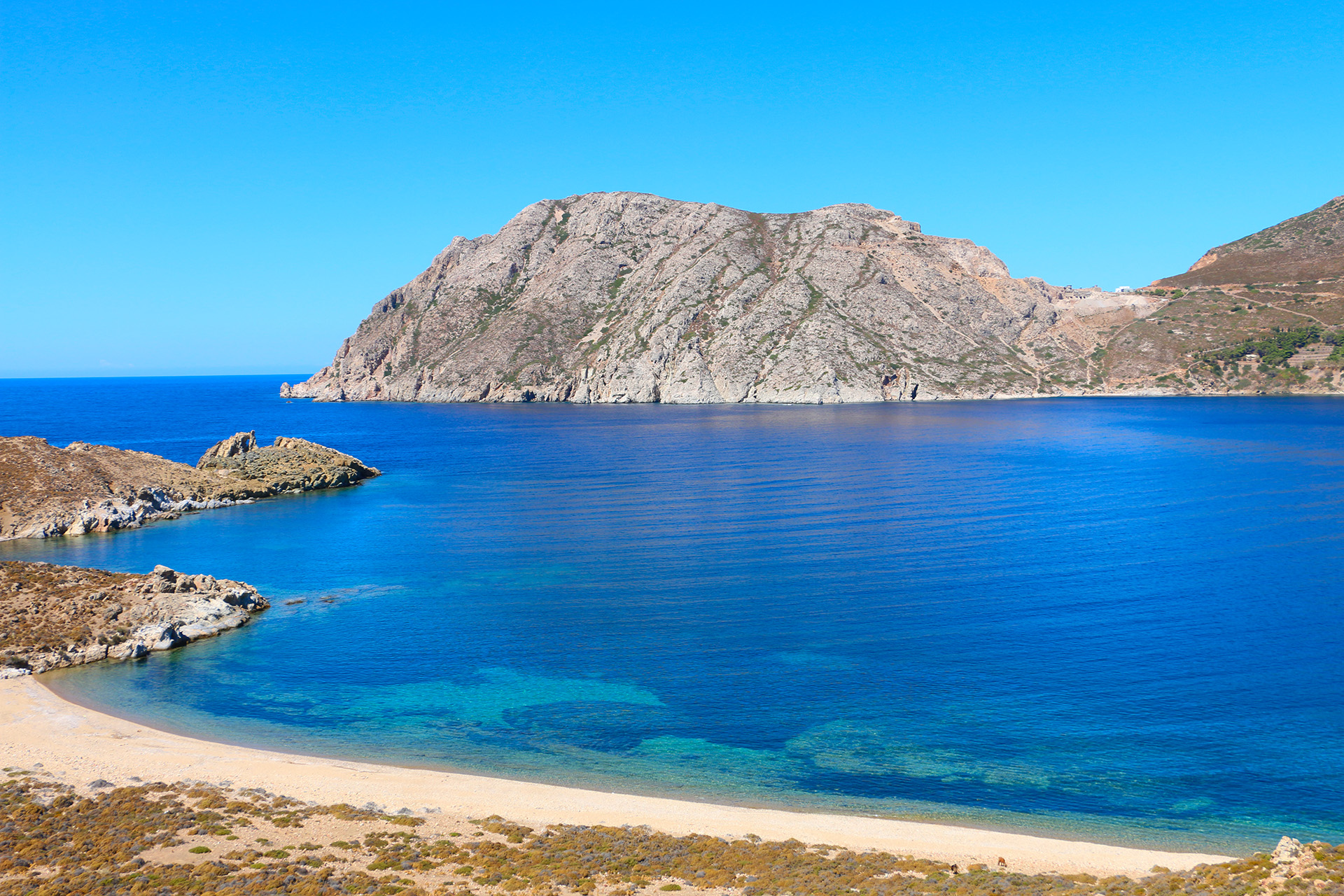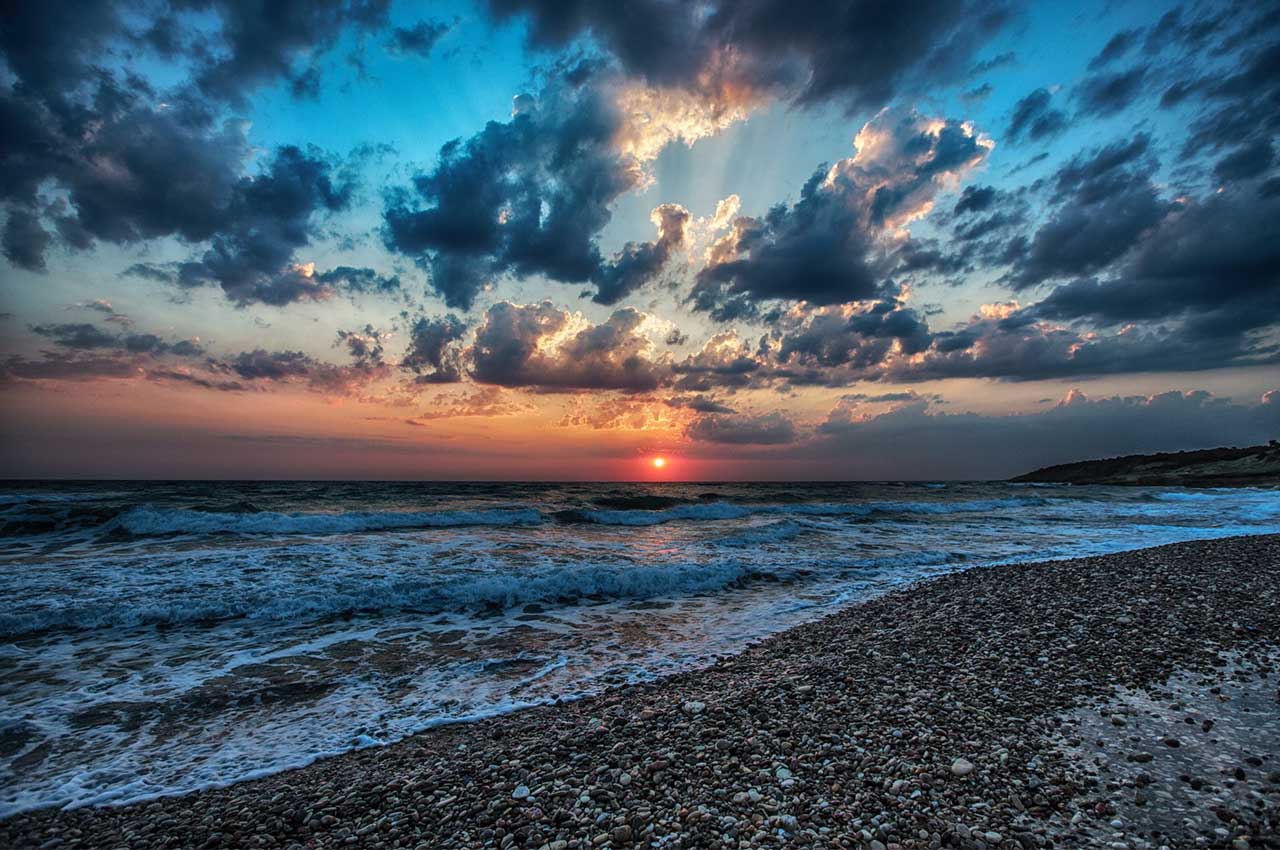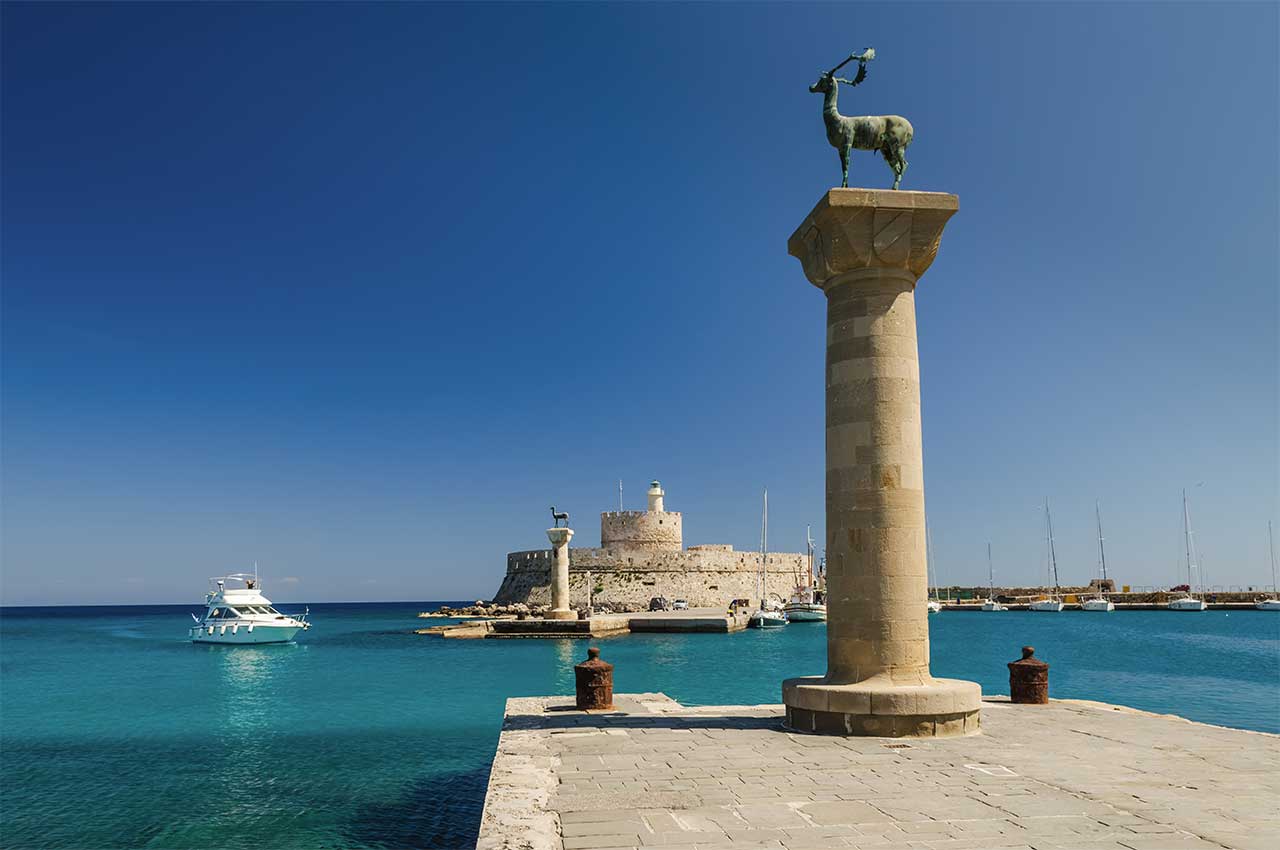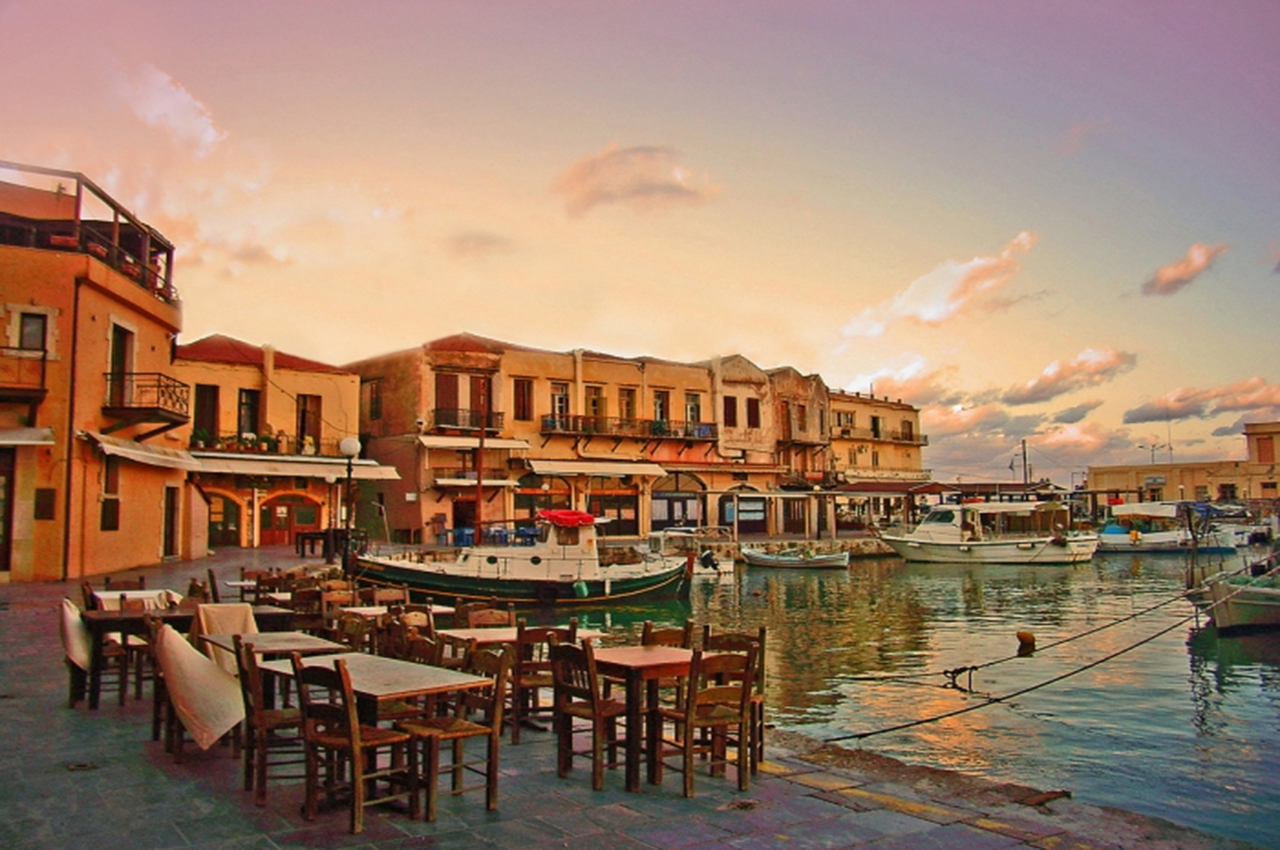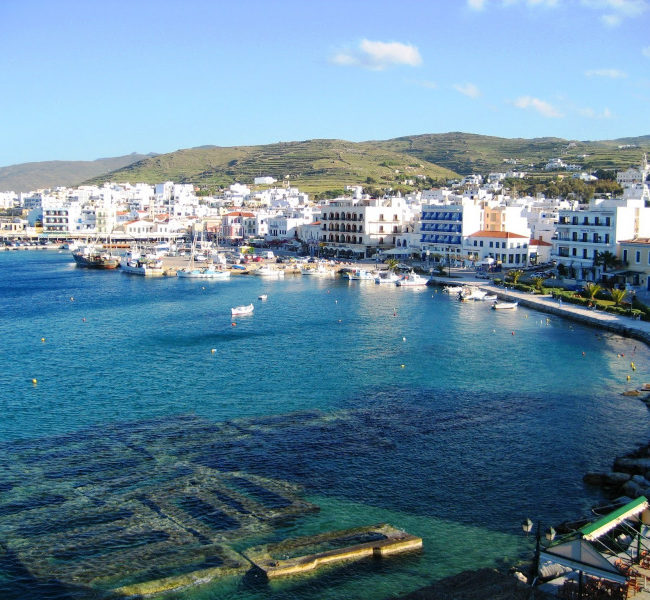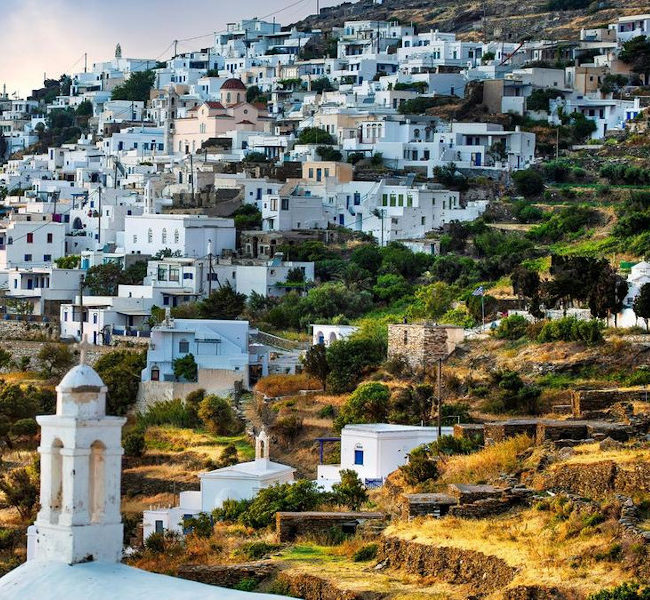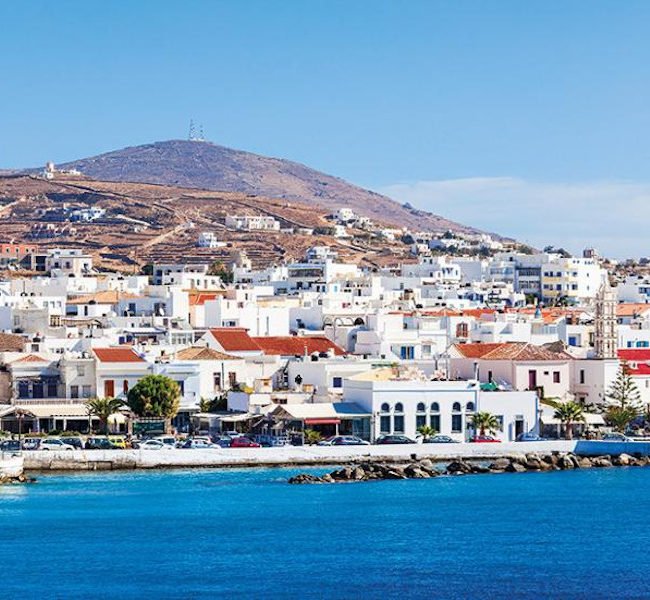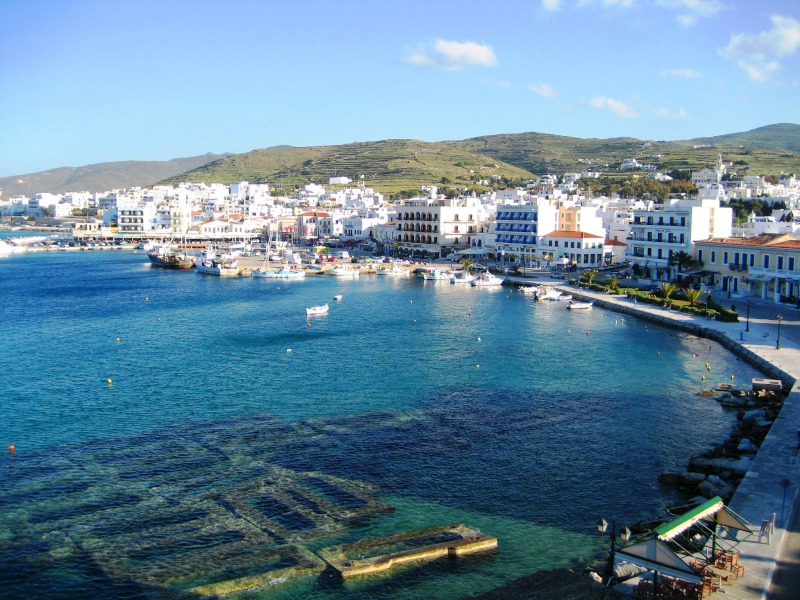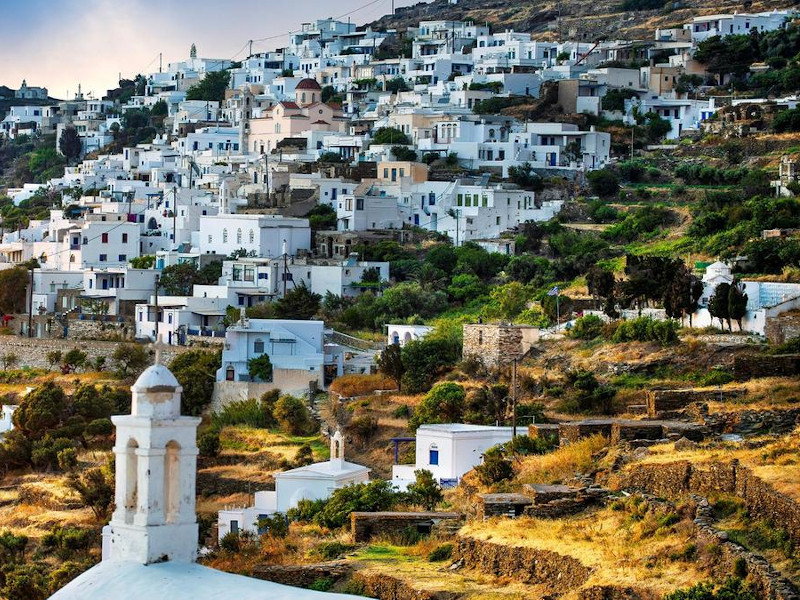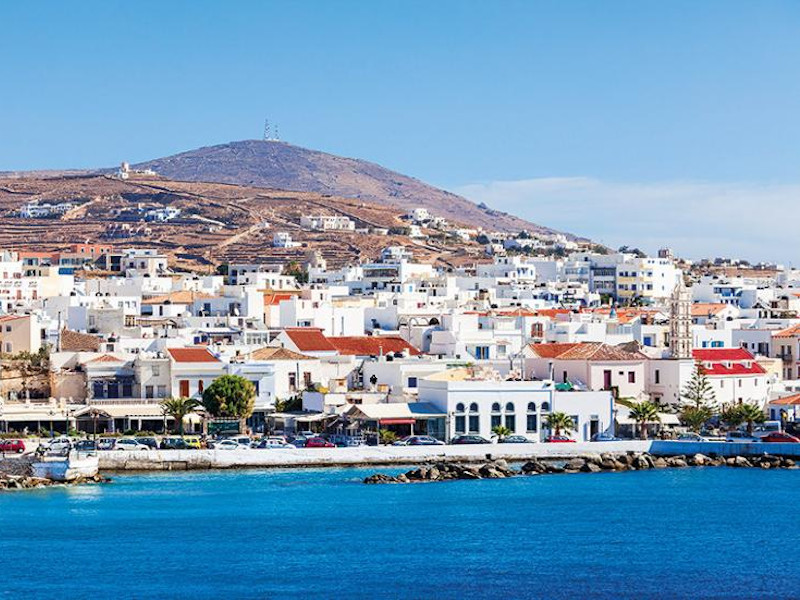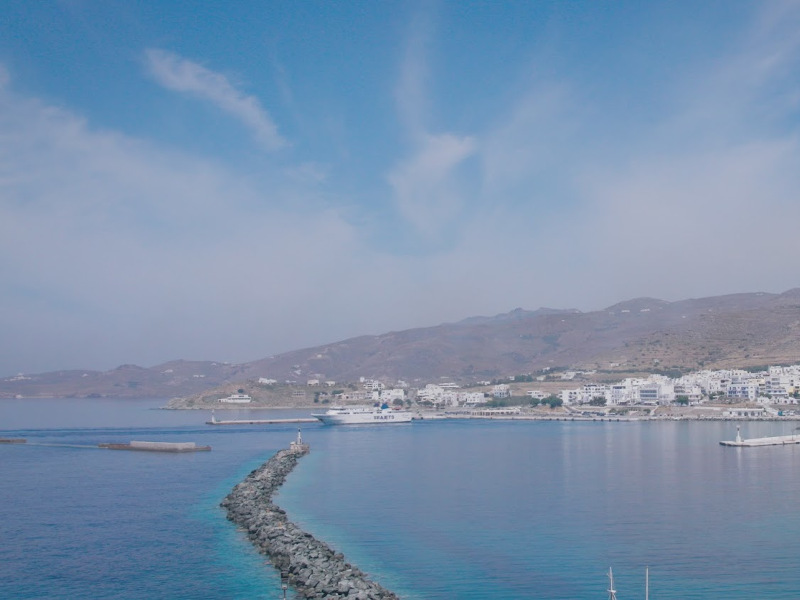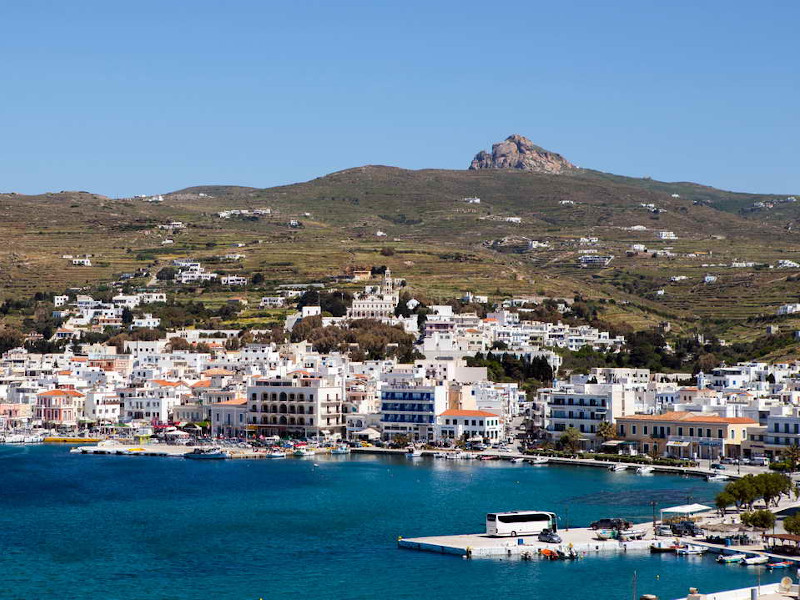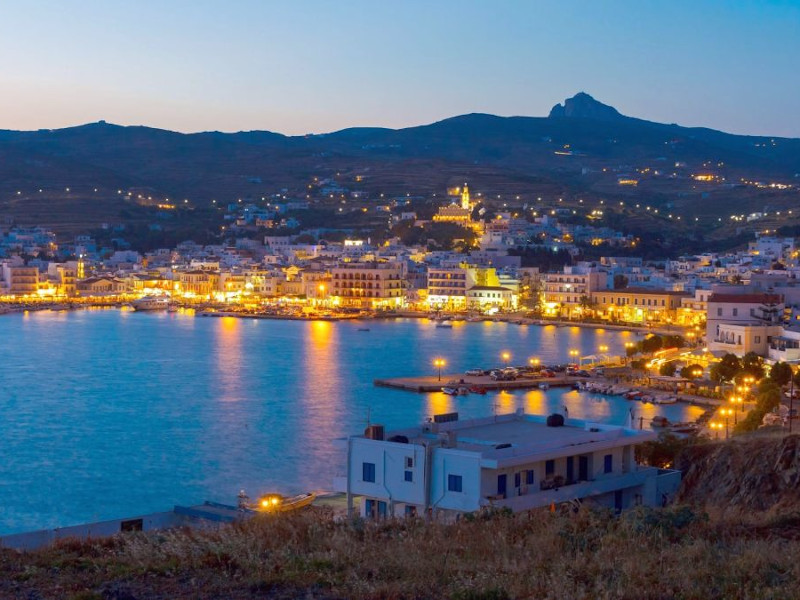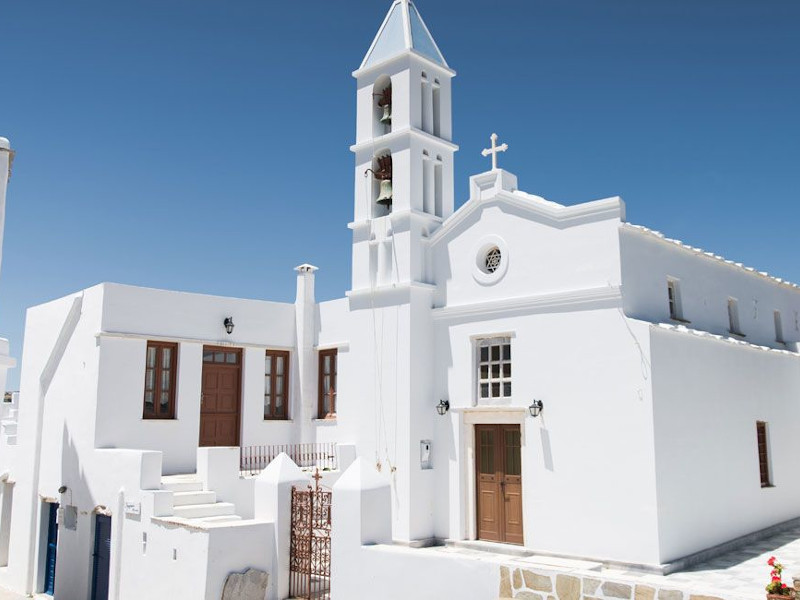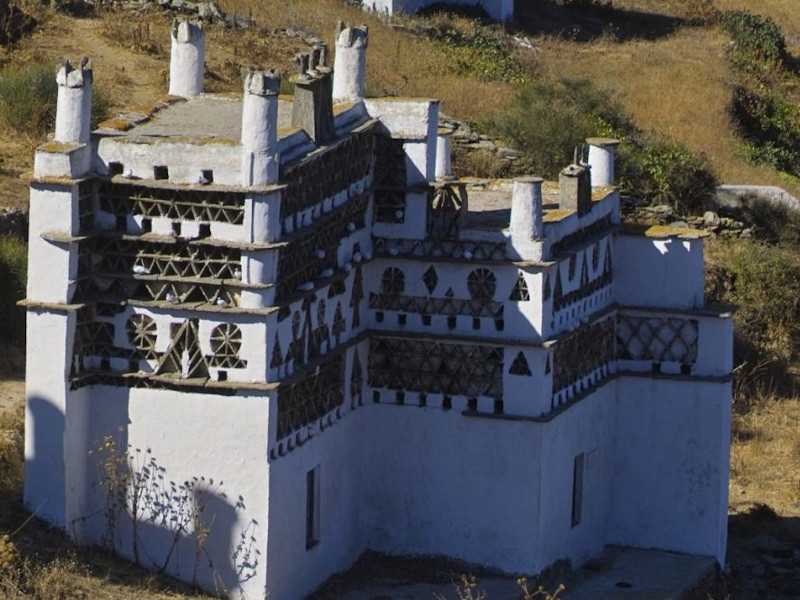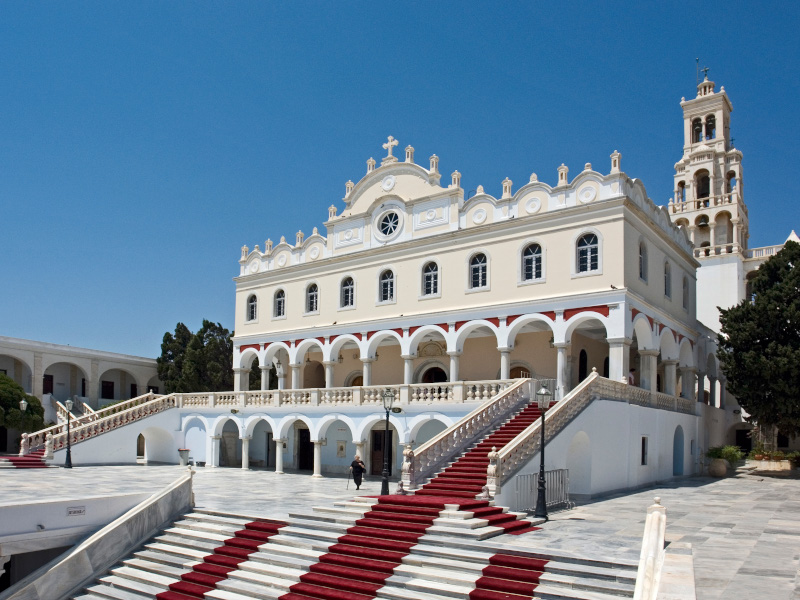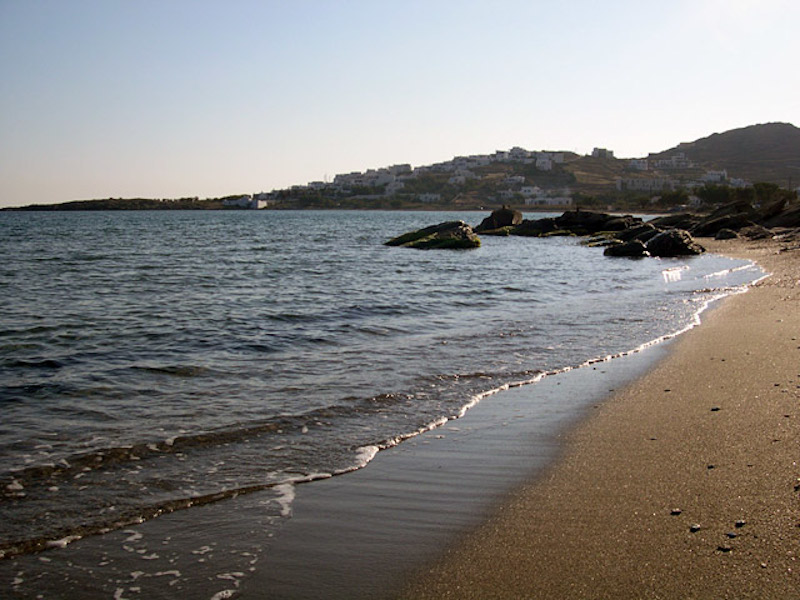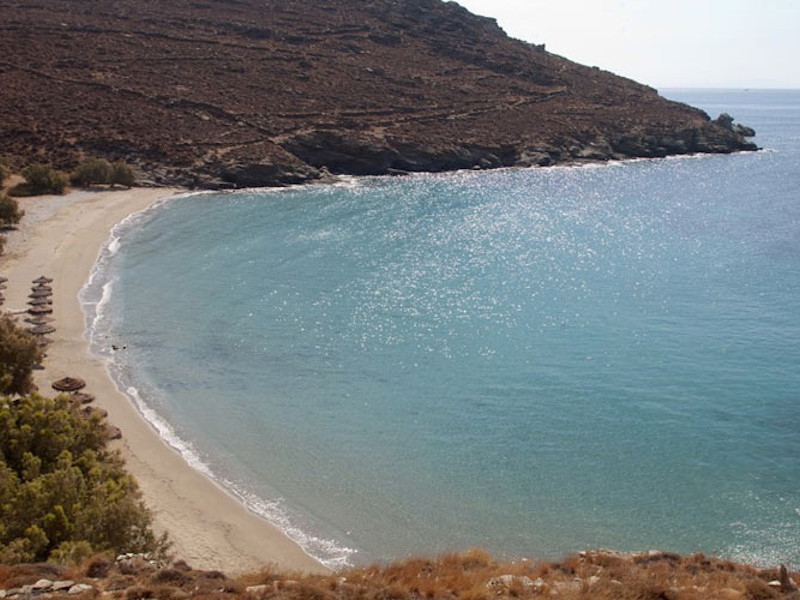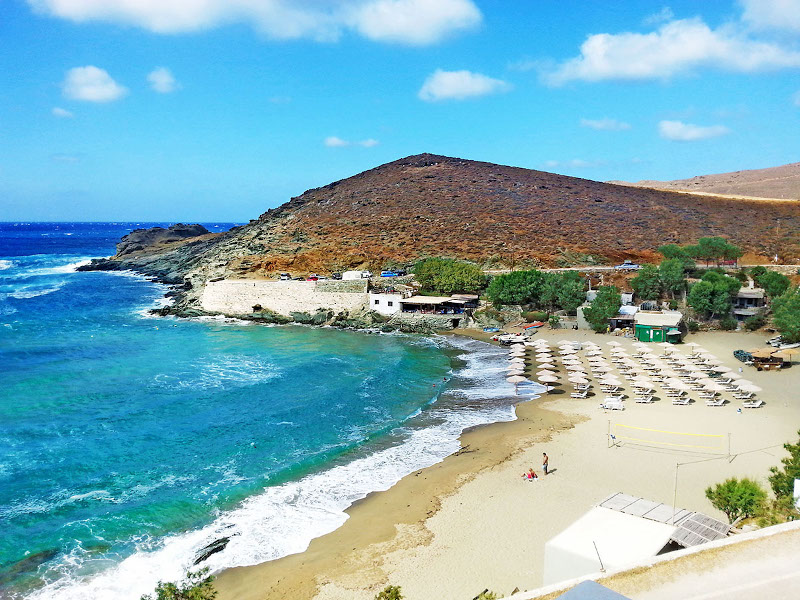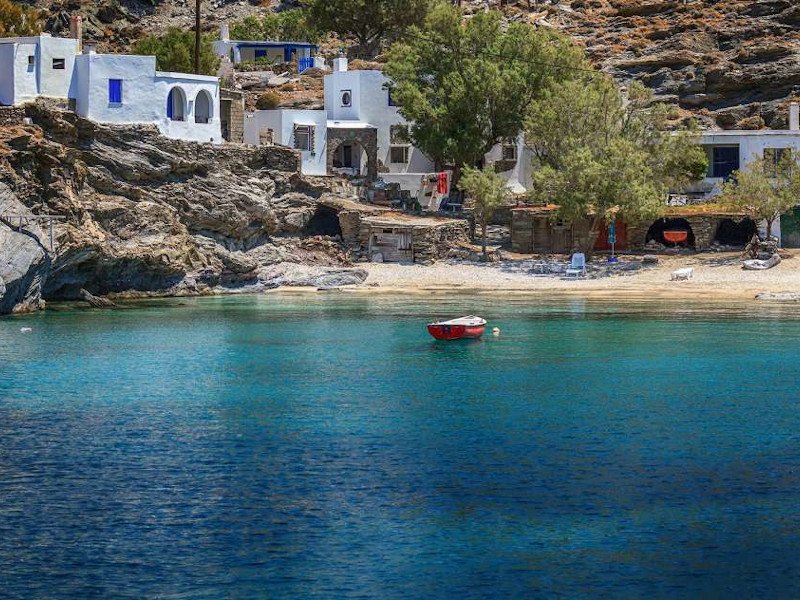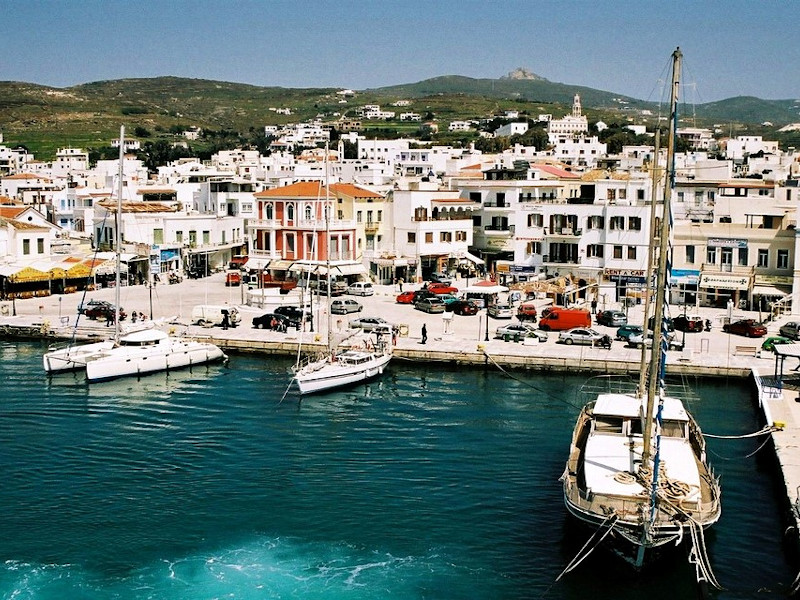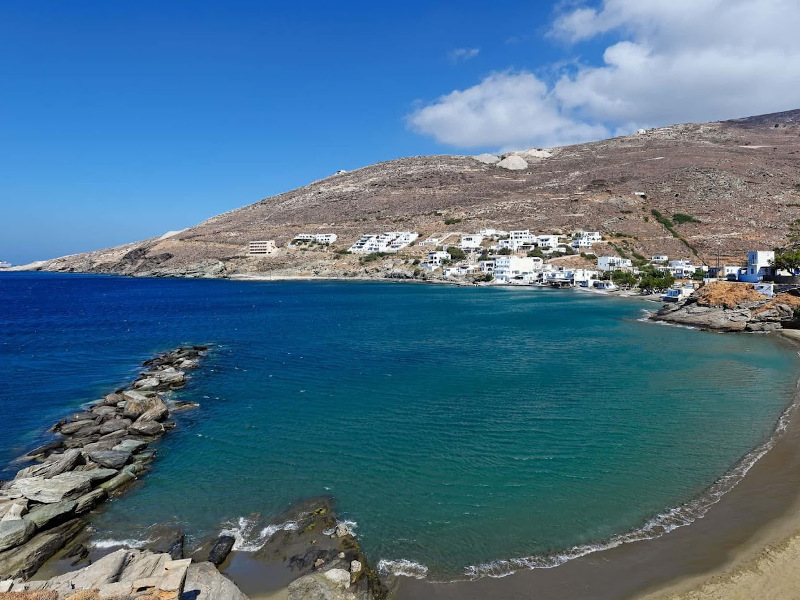Tinos
Tinos is a Greek island situated in the Aegean Sea. It is located in the Cyclades archipelago.
In antiquity, Tinos was also known as Ophiussa (from ophis, Greek for snake) and Hydroessa (from hydor, Greek for water). The closest islands are Andros, Delos, and Mykonos. It has Mediterranean climate and has warm and dry summers and mild and wet winters. In the island you come across the etesians (also known as meltemi winds) the strong, dry north winds of the Aegean Sea, which blow from about mid-May to mid-September.
The island is famous its 80 or so windmills, about 1000 artistic dovecotes, 50 active villages and its Venetian fortifications at the mountain, Exomvourgo. On Tinos, both Greek Orthodox and Roman Catholic populations co-exist, and the island is also well known for its famous sculptors and painters, such as Nikolaos Gysis, Yannoulis Chalepas and Nikiforos Lytras.
But there’s a reason in particular why Tinos Greece stands out. That is because of the Panagia Evangelistria church, with its reputedly miraculous icon of Virgin Mary that it holds. Tinos is also the center of a yearly pilgrimage that takes place on the date of the Dormition of the Virgin Mary (15 August, “Dekapentaugoustos” in Greek). This is perhaps the most notable and still active yearly pilgrimage in the region of the eastern Mediterranean. Many pilgrims make their way the 800 metres (2,600 feet) from the ferry wharf to the church on their hands and knees as sign of devotion.
Tinos Island Sightseeing
Volax (Volakas)
One of the strangest landscapes in Tinos is the village of Volax or Volakas. It is built at an altitude of 284 meters, on a small plateau in the middle of Tinos, surrounded by stones and large spherical granite rocks of volcanic origin. The “lunar” landscape of the village is unique. The origin of the phenomenon of the landscape of Volax stimulated the imagination of residents and also, of scientists.
The traditional occupation of the villagers was basketry. In the workshops you can still see the artisans at work, admire and buy their products.Volax is also the meeting point for climbers from around the world for bouldering (climbing without a rope). The outdoor theater hosts performances in the summer cultural events.
Pigeons Houses (Peristerones)
One of the most important attractions of Tinos is its Pigeons Houses. More than 600 pigeon houses (17th – 18th centuries) are preserved today on the island. Pigeons, offering meat and fertilizer were the main export product of Tinos when trade began flourishing. They are usually found in places open to allow pigeons to move freely and in areas where they are protected from the wind and have access to water. Peristerones are made by slate, a material abundant in Tinos, and the Tinian craftsmen managed to create masterpieces that are unique monuments of folk art and architecture worldwide.
Tinos Museums & Churches
Museums
Archaeological Museum
The Archaeological Museum of Tinos was built in the 1960s, on the main road of Chora leading to the church of Our Lady of the Annunciation (Panagia). Displayed in the museum, there are many funerary vases of the Geometric period (10th-8th century BC) and pottery for everyday use (6th-2nd century BC). One can even find sculptures, mainly heads of the Hellenistic times and Roman copies, as well. Pieces of the Poseidon and Amphitriti temple are exhibited in the courtyard of the museum. The marble sundial of Andronicus (from Kyristo) is one of the most important findings of the museum (1st century BC). It was in the sanctuary of Poseidon and calculated the solar year, the equinoxes and solstices. Notable collections are stored in the warehouses of the museum (such as a significant collection of coins) and therefore, there have been many discussions on a possible expansion of the building.
Giannoulis Chalepas museum
The works of the great Greek sculptor (Pyrgos 1851-1938) are exhibited in the Cultural Center of the Holy Foundation. Exploring the well-preserved house – Giannoulis Chalepas museum a sense is created that Giannoulis has just left from his house though it’s been more than 70 years since he “left”. Some of the major projects of Chalepas, sketches and photographs complement the precious material of the museum.
Art Gallery
Established in 1961 following a donation to the Panhellenic Holy Foundation of Evanghelistria of Tinos, it includes many important works of Greek and foreign painters. The visitor can admire great works made by the two major greek painters of the 19th century, born in Tinos, Nikiforos Lytras (Shepherd, Nigger, Landscape, Portrait of a Man, Portrait of a Woman, The Peasant) and Nikolaos Gyzis (Penelope Gyzis, My Mother Kyra Taro).
Churches
Panagia Evangelistria Tinou (Virgin Mary of Tinos)
The most famous and impressive church of the island, the Holy Church of Panagia Evangelistria of Tinos, as it is officially named, was founded in 1823 at the location where the sacred Icon of the Annunciation of the Virgin Mary was miraculously discovered. The Virgin Mary is said to have appeared three times in the sleep of Catholic nun Pelagia living at the monastery of Kechrovouni indicating the location where the icon was buried. The name (Megalochari) means “with all graces” and is one of the names given to describe Virgin Mary. Numerous reports of miracles of healing rapidly increased the fame of the Church of the Megolohari, with the result that today the sacred icon is the most venerated pilgrimage item of the Greek nation. Four major festival days are celebrated at the shrine: January 30, the anniversary of the finding of the icon; March 25, the Annunciation of Mary; July 23, the anniversary of the vision of the nun Pelagia; and August 15, the Assumption of Mary.
The Jesuit Catholic Monastery of Tinos
It is one of the Catholic monasteries of Tinos located in the village of Loutra. The first Jesuit priest, father Michel Albertini arrived in Tinos in 1661 and settled in Xombourgo. The Jesuits continued to live there until 1840 when they moved to Loutra. This was the year that the monastery received many pilgrims. The monks that time were occupied with the education of the young locals and catechesis. The last Jesuit to leave Xombourgo was Father Kutsinzki who left in 1846.
Today its fame expands outside Greece. Every Friday throughout the year, a Divine Liturgy is celebrated. In July, the annual feast lasts a whole week and believers from all over Greece come here to participate.
Monastery of Holy Trinity in Tinos
The Monastery of Holy Trinity or Agia Triada is located in the southeast of Tinos, near Gyria village. It came into existence somewhere around the year 1610. It used to be a secret underground school run by monks during the rule of the Turkish Empire.
Today, in addition to the church, you will also find a library and a mausoleum here. It works as a small folklore museum with a nice collection of folk crafts.It is built in a beautiful, eye-catching location and is an important contribution to the title of Holy Island that Tinos is characterized.
Tinos Traditional Products
Tinos is rich in local products. It is worth to try the custard-filled pastry called galaktomboureko, the home made pasta with tomato and basil, the local sundried tomatoes, the local cheese called tiniako, the local capers, generously used in salads and in various dishes, the meat products such as louza, siglino, wild rabbit, pigeon cooked in tomato sauce and sausages.
Another tasty specialty of Tinos is dishes with artichokes for the island produces a lot of them, of a high quality, especially in the area of Kato Meri. The excellent thyme honey is a must. The local tsipouro and ouzo as well as the local wine are also great.
Tinos Folklore Festivals and Cultural Events
Religious Feasts & Festivals
Tinos is an island that maintains its old-age customs and traditions to this day. Visitors will enjoy a glorious welcome at the local feasts organized in the island throughout the year including eating, drinking, and dancing.
August 15th
On the 15th of August, the feast day of Virgin Mary attracts thousands of pilgrims and visitors from all many parts of Greece. The feast lasts for two days including various ceremonies in the glorious church of Panagia Megalochari and a litany of the miraculous icon which is accompanied by the marching bands of Tinos. This is a very large celebration as the Virgin Mary of Tinos is considered the protector of all Greece.
July 23rd
On the 23rd of July, Tinos celebrates the feast day of Agia Pelagia. It is an important feast where the icon is taken to the Monastery of Kehrovouniou. Visitors and nuns arrive to honor the icon before it is back to the church where it was found.
March 25th
On 25th of March, the Annunciation of Holy Virgin at Chora. The feast is organized by the Church of Evagelistria with litanies and church services which are combined with the patriotic celebrations for the National Anniversary. After the litany of the icon, there are traditional dances and delicacies treats served to the people.
In many cases, the feast ends with the people dancing in the central square of the village. Men and women of all ages dance “ballo” and “syrto” in the sound of local instruments, especially the violin. Good music, friends and wine contribute to an exquisite mood for fun.
Cultural Events
Tinos Festival
Tinos Festival is held during the months of July, August, and September and consists of interesting events that will surely attract all visitors. The festival takes place in many villages and in Chora. From music concerts to theatrical plays and book fairs, the is ideal for all ages.
Revival of Trawl
The Revival of Trawl is one of the best-known events organized in the village of Kionia where visitors gather at the beach and fish for hours. Wine and food are served.
Rakizio
Raki is the traditional drink of Tinos and you will find it everywhere. In cafes, in shops, in any social event. It is a key element of the culinary identity of Tinos. Raki is produced in almost every district of Tinos. However, Falatados (in which Rakizio takes the form of festival on Sept. 8th) and Steni are famous for their raki.
Tinos Beaches
Agios Fokas
With a length of 3km, it is rightly considered the largest beach on the island. It is very close to Chora (2 km) and it is ideal for all visitors as it is easily reached by foot. Agios Fokas beach has sand and scattered pebbles, and plenty of shade trees. It is organized with sun loungers and beach bars and offers beautiful views of the “sacred” island of Delos. Along the way, cafes, restaurants and taverns are spread out.
Kiona
Very close to Chora (only 3 km), Kionia beach is a narrow sandy and pebbly beach overlooking Syros. It is organized and you will find plenty of cafe and taverns.
In Kionia, there is the ancient Temple of Poseidon and Amphitriti.The part of the beach, in front of the site, is called Tsambia and -near the cliffs- it is sheltered and protected from the wind.
Agios Sostis
Just 5km. east of the city of Tinos, is one of the most beautiful and bustling beach of the island, with view at Mykonos. Has shallow waters and the trees behind the beach provide natural shade to anyone who wishes. The beach has earned plenty of prizes for the cleanliness of its water. Ideal for families, it is organized with sun beds.
Agios Petros
Agios Petros beach is an idyllic setting as it is divided into two beaches by a rock at the top of which is the chapel of Agios Petros, which gave its name to the beach. The beach is not organized and offers views of Syros. Here you will see an old shipwreck.
Apigania
It is an exotic beach with turquoise waters, next to greenery and white rocks like sculptures. You may not have the easiest access, but it is certainly one of the most beautiful beaches on the island.
-
Destination
Tour Location


